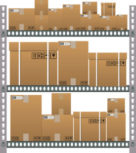
You’ve hit that point, that point in the middle of the afternoon on your second day on the job. It’s just you, your desk, and six folders on your mostly empty laptop. You’ve already looked through them, especially, the well-prepared onboarding package titled “Hello” emailed from HR.
All things considered, orientation has gone pretty well. You’ve navigated the various benefits packages and signed up. You’ve been assigned passwords; a nice fellow from the IT department even stopped by to make sure everything was running and connected. You’ve briefly met the two members of the senior management team who aren’t away at an industry conference. Your tour of the office was inspired—nice art work! You’ve had two lunches with people from your own work group. Halfway through lunch #2, you learn that one of your lunch companions was also a finalist vying for the position you landed.
So.
On the way back to your office from the coffee station, you’re wondering: “Where the heck is everyone?” The people you can see look busy; heads down wearing earbuds or working in small groups in small meeting rooms with the doors closed. You hesitate to interrupt. Back at your chair, you notice a few studies on the shelf of the otherwise abandoned bookcase. You could spend the next hour looking through those—they’re dated 18 months ago.
So. You check your emails. The next event on the calendar is a staff meeting tomorrow at 4:30 PM, 25.5 hours from now.
OK.
What you could use right now is a MAP or a few good lists.
A primer. A set of organized notes about first things to do and where things stand. Suggestions for directions to move in. What needs to be reviewed, customer status reports, who needs to be met, where key files can be found, what deadlines are looming—basically, what you can expect and what is expected of you for oh, say, your first few weeks. Not to make plans or decisions for you, but just a few ideas to help you get your feet on the ground.
Nice!

